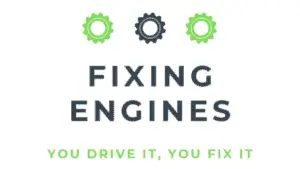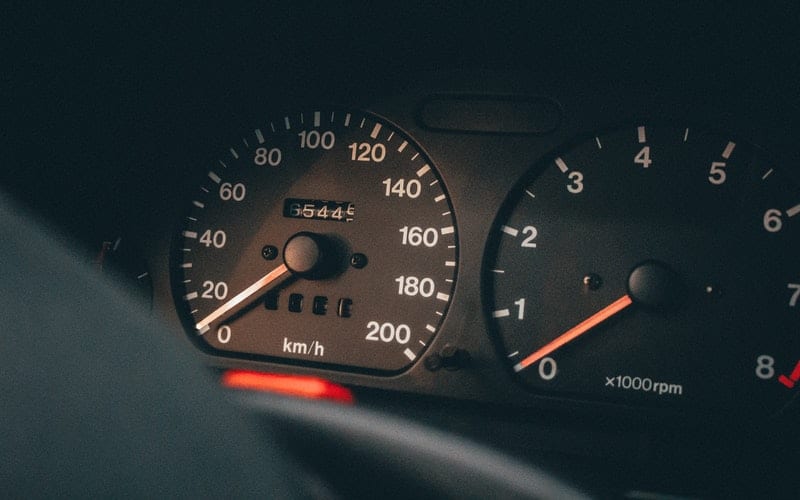When the vehicle does not reach the desired speed that the driver wants, the first thing that they check is the tachometer. Usually, a driver can test an engine’s full capability by stepping on the vehicle’s throttle. While climbing up in speed, the driver looks down and notices that the tachometer (the vehicle’s RPM meter) is not scaling up to its full potential. When this problem happens, it’ll usually climb until the torque (the rotational force) of the engine peaks, resulting in power loss (and an unhappy driver). What can cause the vehicle’s RPMs to cut off?
The most optimistic answer that the driver would like to hear is that the vehicle itself has a government limiter installed. This is a computerized limit set on factory vehicles on how quickly the vehicle can accelerate. If that isn’t the reason, there are a few mechanical malfunctions to check on the vehicle that will get it back on the road in no time.
There are several reasons why a car might not go past a certain RPM, with the most common ones being issues with the air filter, poor fuel pressure, a dirty mass airflow sensor, or engine issues that might be causing the engine to run in limp mode (in order to prevent further damage).
Are There Any Dashboard Lights On?
To figure out the vehicle’s issue, the best way to start figuring out the problem is by looking at your dashboard and checking to see if any lights are illuminated.
The most common lights to look for are the service engine soon light (SES light) and the check engine light (CEL light). Although similar, these two lights can point out different issues.
The CEL light can point out repairs that your car needs, while the SES light points out maintenance required (specifically having to do with the engine’s oil system).
If either of these lights or an oil lamp light pops on from time to time, it is in the driver’s best interest to diagnose the vehicle using a code reader. A code reader is helpful in these situations because it provides an error code for the malfunctioning car part.
3When the vehicle has been diagnosed, make sure to cross-reference the code(s) that arise and the symptoms of the vehicle’s issues with the internet. Google is a mechanic’s best friend, after all!
Computer in Limp Mode
There’s a possibility that the first problem has to do with the engine computer unit (ECU). The ECU is the engine’s brain, and when there is a problem with it, oftentimes, there is a safety mode that it engages in that’s called limp mode.
Limp mode allows the car to safely navigate from one point to another without causing more damage to the engine. Although it is a great feature of the ECU to prevent further issues, it does this by limiting the engine’s RPMs to a certain number.
This can be misconstrued as another issue when there is an underlying issue with the vehicle.
Issues with Fuel Filter
The fuel filter is explanatory in its name, as it sorts out the dirt and contaminants that try to enter the vehicle’s fuel system. The filter itself has to be replaced at certain maintenance intervals, and if it’s left untouched, the vehicle will develop more issues with its fuel system.
The filter doesn’t cost a lot of money to replace, nor is it an invasive replacement. When replacing the filter, there should be obvious signs of wear that include it being drenched with contaminants, dirt, and even having small holes and puncture marks.
When the old filter continues to be in use, the fuel system cannot breathe properly. When the fuel system cannot operate properly, this results in an engine malfunction, which can also limit the engine to a certain RPM.
Optimistically speaking, it is better to have a fuel filter issue than a whole fuel pressure problem because the filter is less expensive and less invasive.
Poor Fuel Pressure
If the filter was replaced or the filter was fine, and the engine is still not allowing maximum engagement, the problem might lean towards a fuel pressure issue.
A car can run fuel from the tank to the engine in three different ways: normal in fuel pressure, higher in fuel pressure (or a car running “rich” in fuel), or leaner in fuel pressure (or a car running “poor” in fuel). Rich means that the car is pushing more than enough fuel, resulting in lower gas mileage.
On the other hand, lean means that the car does not allow for enough fuel to get the engine. When the car runs lean on fuel, this causes an abundance of issues for both the fuel system and the engine, which is a prime reason why the car enters a conservative mode.
To fix this takes patience, as the issue can involve either (or both) fuel pumps. It may also have to do with part of a fuel pump or even the fuel lines (if they are corroded). Replacement isn’t a huge concern, with the fuel pumps being the most expensive fix at $200-$300. Just be wary. The project tends to get messy because if there is an oil leak, it gets everywhere.
Dirty Mass Air Flow Sensor
Before even messing with your fuel system, it is best to check the mass airflow (MAF) sensors to see any loose connection. The MAF sensor is a key component for reading the vehicle’s air ratio.
If the connection is secure, but the surroundings look like they’ve been covered with sludge and grease, the MAF sensor will need to be cleaned and reset. This is a quick fix, with the hardest part being the MAF sensor reset procedure.
To clean it, the MAF sensor has to be disconnected and liberally sprayed with MAF sensor cleaner (do not use anything else because the chemical’s properties are specifically made to clean and dry very quickly). It is also recommended to let it air dry versus cleaning it with a towel because particles can interfere with the sensor itself.
When the sensor is cleaned and plugged back in, it is best to ensure that the reset procedures are done correctly. If the reset procedures are not done properly, the tachometer will read incorrectly because of the improper air readings, thus making for a bouncing needle on your dashboard.
Final Thoughts
Limited RPMs can start as a frustrating task but can end up being a blessing in disguise. The petroleum engine is a complex but smart device that allows for open communication when the mechanic knows what they are doing. Whether the issue is a dirty mass airflow sensor to a fuel pressure pump replacement, it is always best to diagnose the vehicle before throwing random parts at the vehicle.

